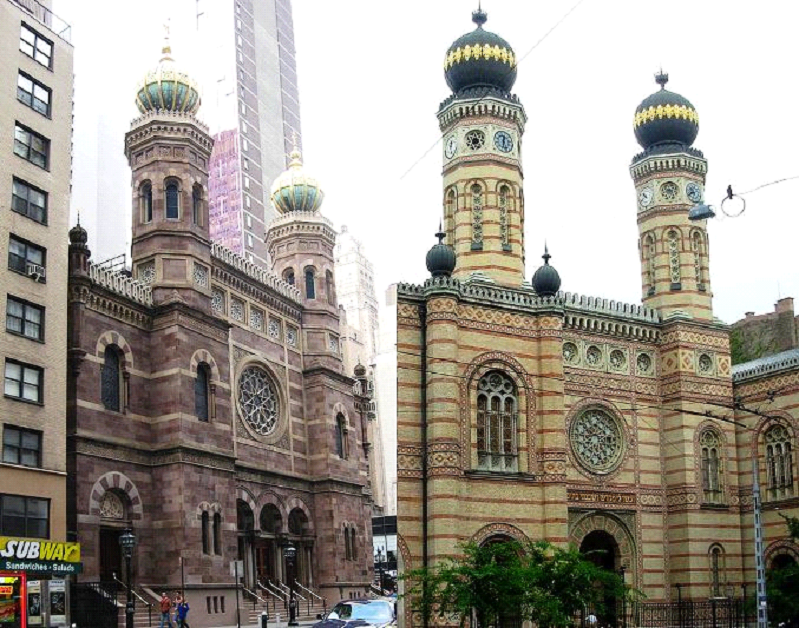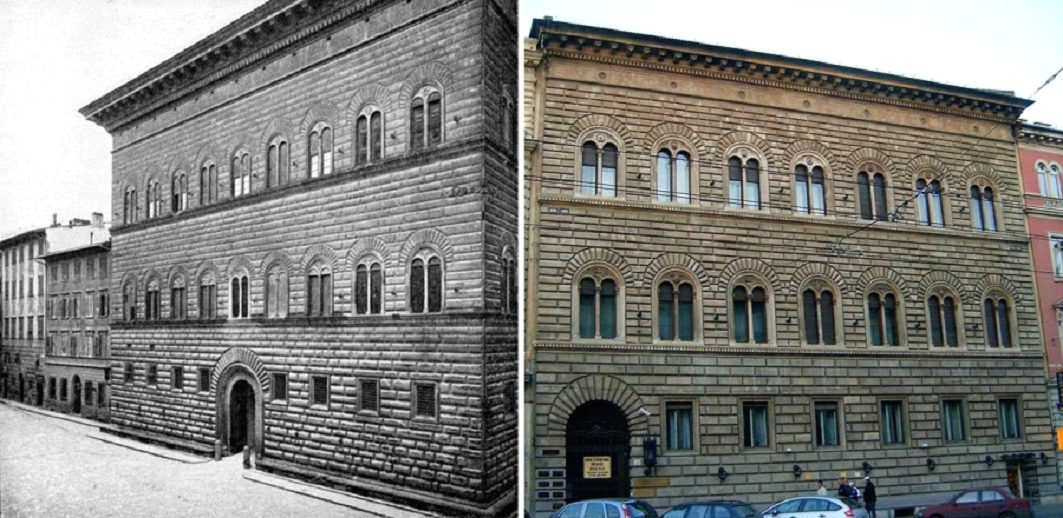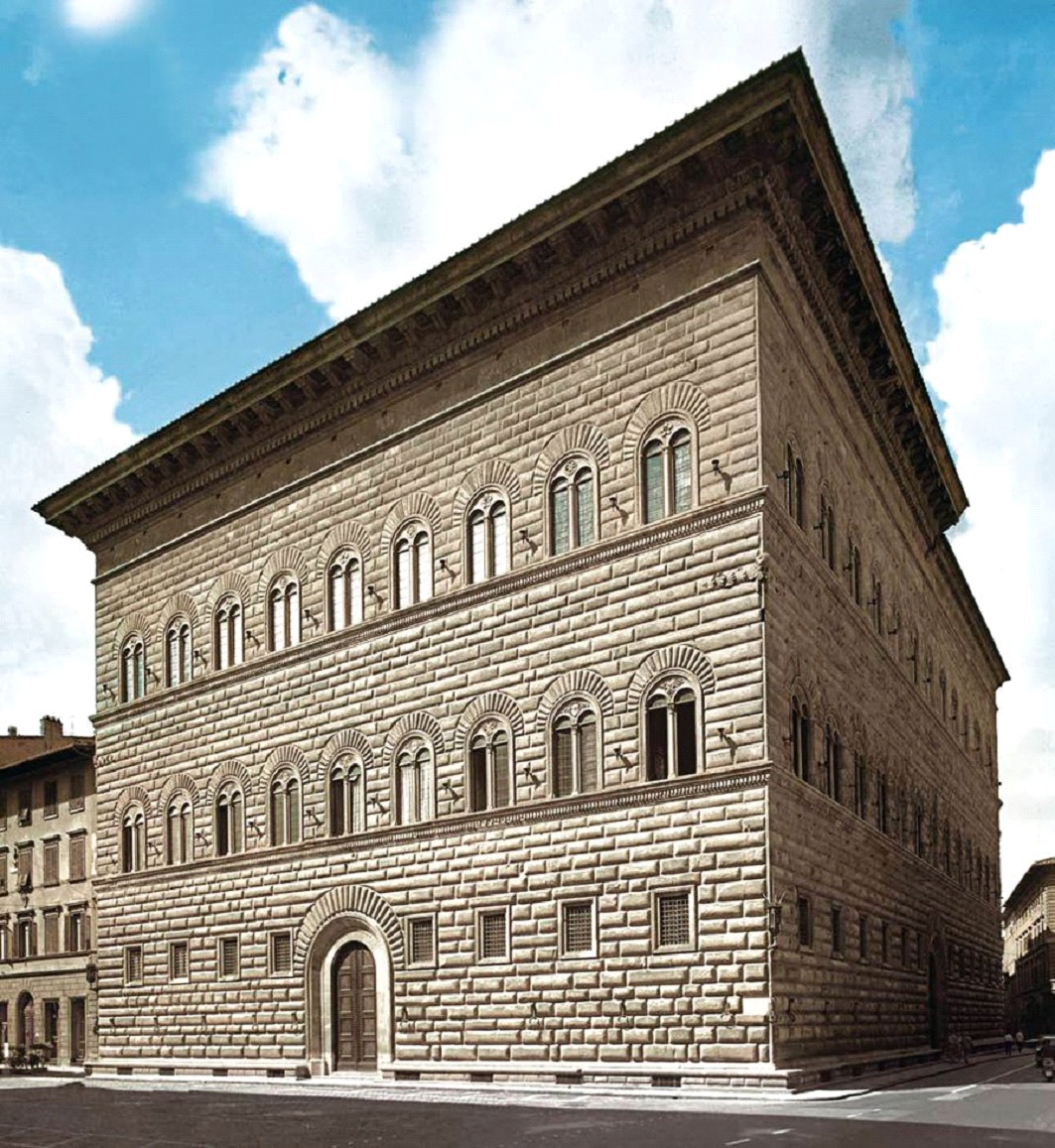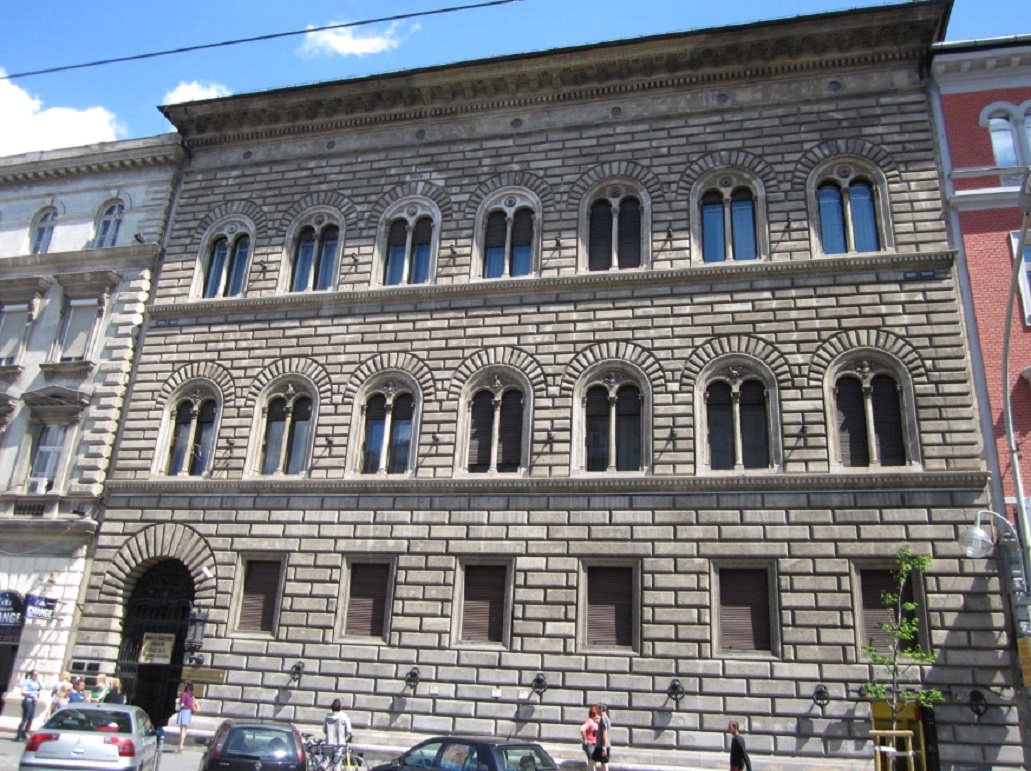WHICH ONE IS THE ORIGINAL?
Quiz
Sometimes great architecture becomes so popular that a replica is made at a different location. We will show two Hungarian-related examples. Can you guess which one is the original and which one is the replica?
Do the guessing and then read the story behind.
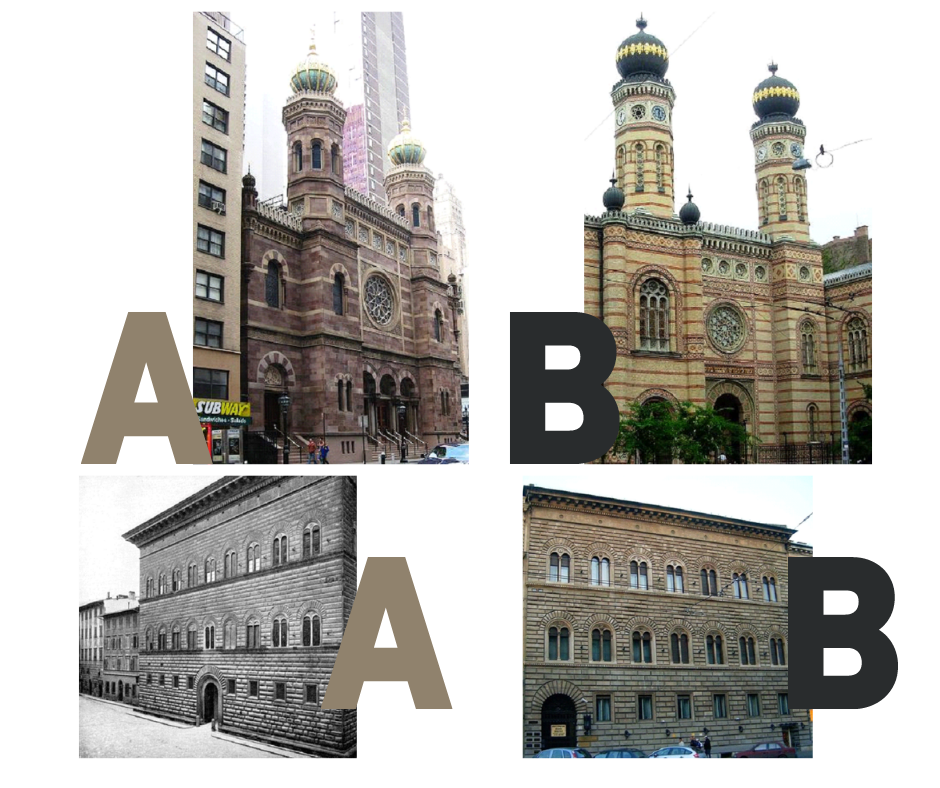
Would you like to know the story behind the buildings?
The photo on the left depicts the Central Synagogue on Lexington Avenue, Midtown Manhattan, New York City. It was built in 1870–1872 and was designed by Henry Fernbach in the Moorish Revival style as a copy of Budapest’s Dohány Street Synagogue.
On the left, you see the Palazzo Strozzi, a Renaissance palace in Florence built between 1489 and 1538, according to the plans of Benedetto da Maiano. It served as a residence of the Strozzi family.
An almost exact copy of the Florentine palace can be found in Budapest at 13 Teréz Körút. Count Géza Batthyány fell so much in love with the Strozzi Palace that he entrusted the making of a copy to Alajos Hauszmann, a leading architect of the late 19th century who was also behind the New York Palace. The palazzo was finished in 1887, and it fitted very well with the general architectural landscape of a city dominated by historicism. It’s easy to depict the major difference: the Batthyány Palace has the main gate on the left side.
